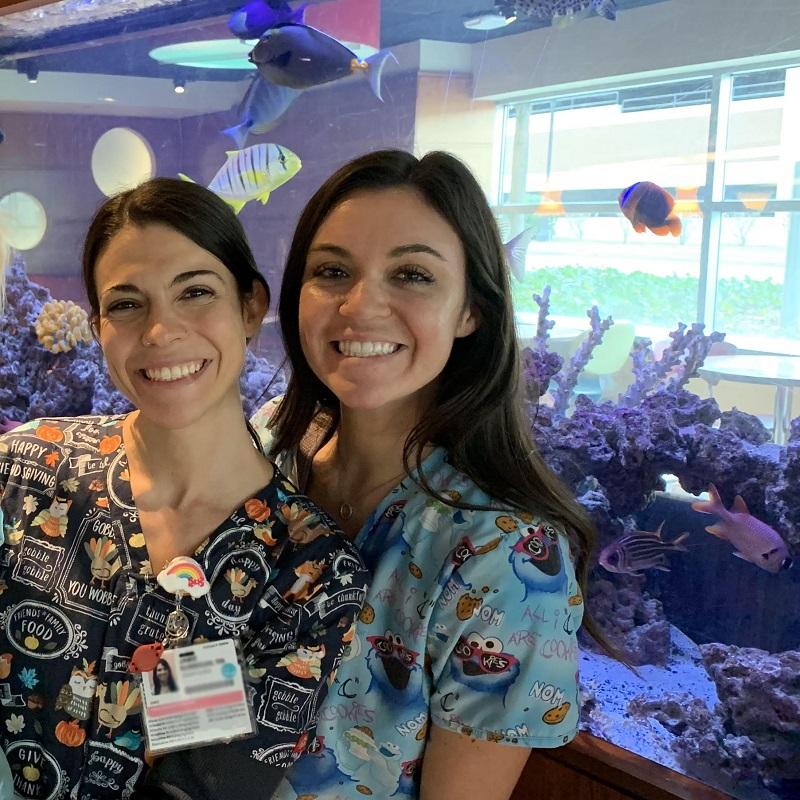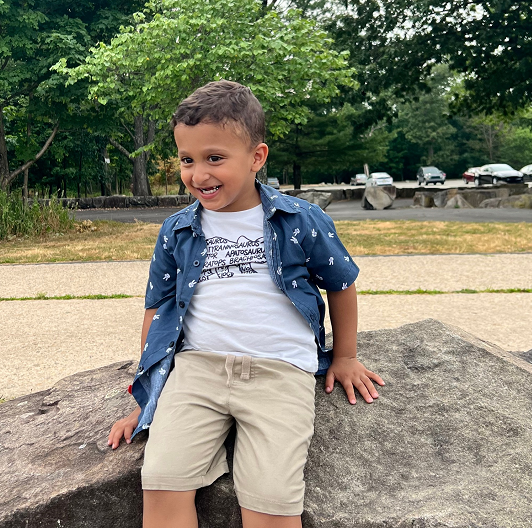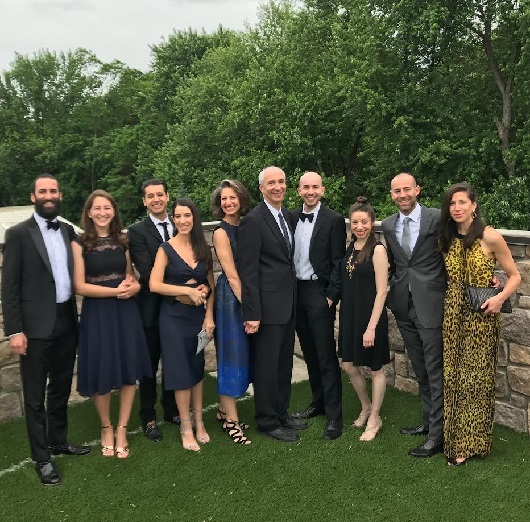Colts Neck Teen Gets Relief From Unexplained Chronic Pain

December 14, 2022
High-energy high schooler John Sherrod almost never stopped moving. Days of honors-level classes routinely led to afternoons and weekends of sports practices and competitions, with a rigorous weight-lifting regimen filling in the gaps.
In March 2022, John knew something was truly amiss when he couldn’t even toss a football without feeling achy and utterly exhausted. The Colts Neck High School student had undergone surgery two months earlier for an ankle injury, but within a short time, he felt tired and sore all over, with headaches, crippling brain fog and terrible sore throats.
“It was frustrating because all the things I work for and take pride in—my grades, being competent in sports and treating my body well with exercise—weren’t happening anymore,” says John, now 17.
Adds John’s mother, Jen: “It was hard, because I’d try to get him up to go to school, and he’d say, ‘Mom, I can’t get up.’ We’d get him there, but the nurse would call a few hours later and say he needed to go home. At that point, we knew he needed to see his doctor.”
John’s mysterious and distressing symptoms kicked off a medical odyssey that only a team effort by specialists at K. Hovnanian Children’s Hospital at Jersey Shore University Medical Center was able to solve.
Frustrating Dead Ends
Blood work by John’s pediatrician showed he had dealt with mononucleosis in the past. The Sherrods thought perhaps “mono” symptoms, which overlapped somewhat with John’s, were showing up late. But multiple streptococcus tests that might explain his constant sore throat came back negative.
A referral to The Children’s Hospital’s pediatric infectious diseases specialist Mariawy Riollano-Cruz, M.D., led to more tests. Specialized testing proved positive for an unusual strain of strep. After John developed a rash and sensitivity on his torso, Dr. Cruz was also able to diagnose him with shingles, a painful condition caused by a reawakening of the virus that causes chicken pox. “The fact that John had shingles made me even more aware of the emotional stress he was undergoing,” Dr. Riollano-Cruz says.
But these findings didn’t explain John’s body aches, lack of energy and muddled thinking. So Dr. Riollano-Cruz referred the Sherrods to a pediatric hematologist, pediatric rheumatologist and pediatric neurologist.
“It was a difficult case because no particular symptom could draw me to a diagnosis,” Dr. Riollano-Cruz says. “I remember his mom’s face when I first saw her and how worried she was. They had no clue what was going on and really wanted an answer.”
Breakthrough Exam
By May, John was being home-schooled since he was too exhausted to attend school in person. While the hematologist and neurologist found nothing abnormal, pediatric rheumatologist Anna Carmela Gironella, M.D., needed only an hour with John—pushing on common pressure points across his body—before arriving at a diagnosis: amplified musculoskeletal pain syndrome (AMPS). The syndrome, often compared to fibromyalgia, can lead to widespread pain.
“It was the first appointment of many where we could tell she was onto something, from where she was touching,” Jen says.
John adds: “I hadn’t told Dr. Gironella beforehand where I had pain. But when she found every single spot without asking me where it hurt, I thought, wow, this is going to be over soon.”
As mysterious as John’s symptoms had been, AMPS is not an unusual diagnosis. “About 30 percent of patients we see have these types of pains,” Dr. Gironella says. “But the confidence of my diagnosis was possible only because every other condition had been ruled out first [by Dr. Riollano-Cruz].”
AMPS is influenced by a mind-body connection that’s unique to each patient, she explains. In John’s case, his ankle injury may have triggered the syndrome, skewing signals to the brain that still registered pain even after the injury had healed. “Your nerves still think something’s wrong, sending pain signals to the brain, then nerves in other areas far from the original injury start sending pain signals, too,” Dr. Gironella says.
Retraining the Brain
Treatment for AMPS is physical therapy that bridges the mind and body again. John’s physical therapy at Hackensack Meridian Health Village at Jackson blended intense stretching and exercise that targeted his hypersensitive nerves as well as guided meditation. “My physical therapist told me we were going to retrain the way my brain interprets pain,” John says.
The strategy worked marvelously, and John’s symptoms improved markedly after attending physical therapy three days a week for a month. Now a high school junior, John is cleared to lift weights and is relishing his normal routine. “This experience definitely changed my perspective,” he says. “I appreciate my life a lot more.”
Dr. Cruz and Dr. Gironella agree that the cohesive team of pediatric specialists was key in diagnosing John as quickly as possible. “The team work, communication and collaboration of our teams allows us to provide the best possible care for our patients,” Dr. Cruz says. “As a physician, it gives you so much peace. It definitely made a difference in John’s case.”
Next Steps & Resources:
- Meet our sources: Anna Carmela Gironella, M.D., and Mariawy Riollano-Cruz, M.D.
- Find a physical therapy location near you
The material provided through HealthU is intended to be used as general information only and should not replace the advice of your physician. Always consult your physician for individual care.





